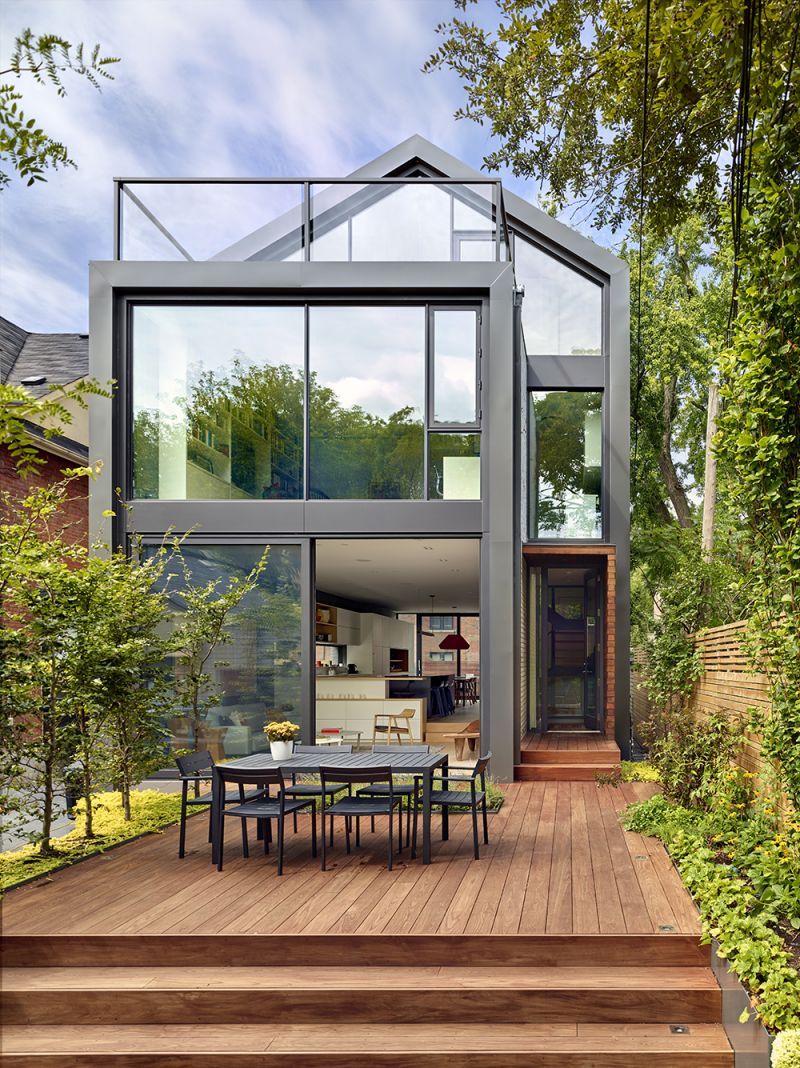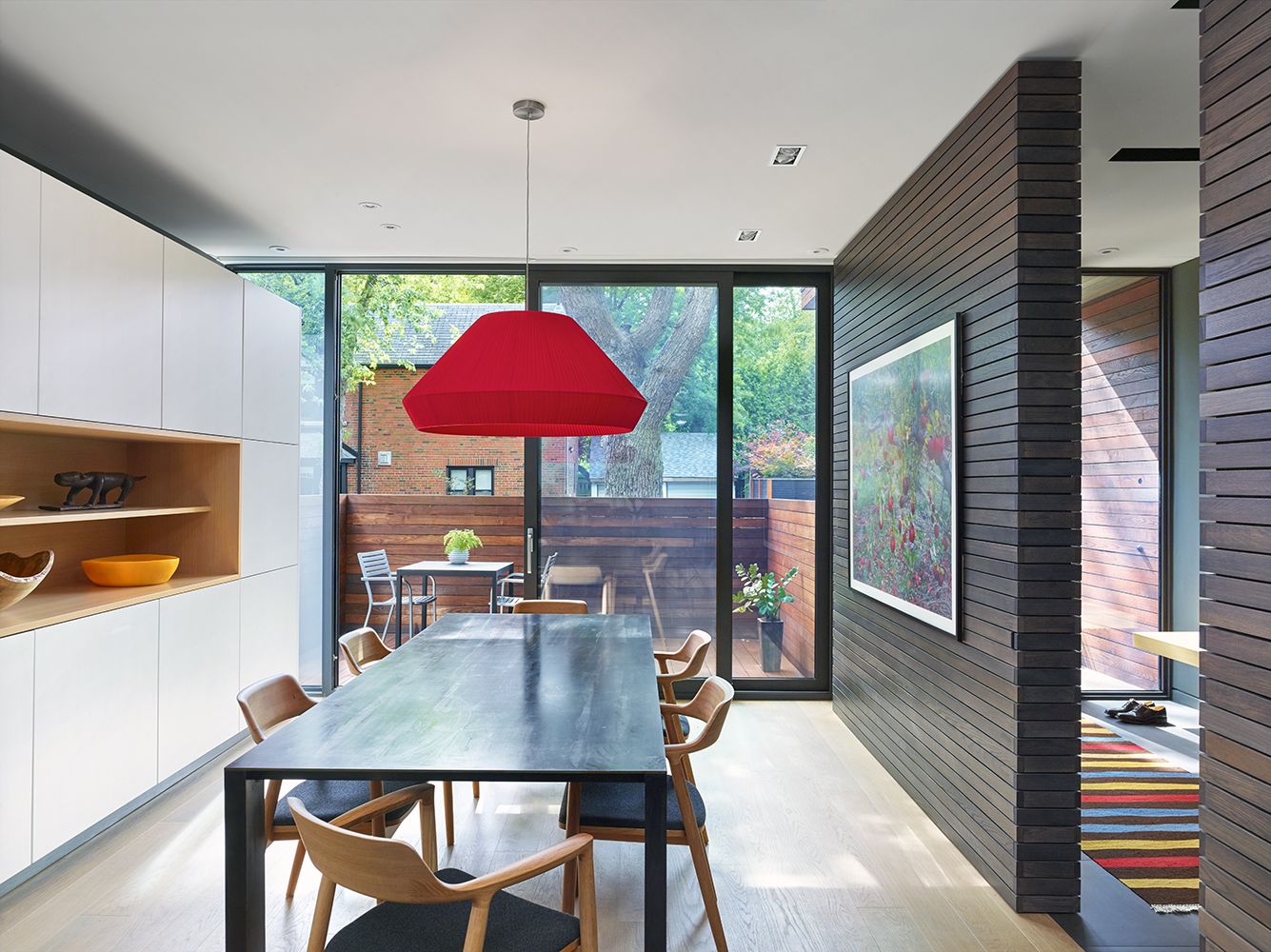
Skygarden House by Dubbeldam Architecture + Design
In the first of our articles giving more information and details behind our 2018 Architecture MasterPrize winners, we look at Skygarden House, a winner in the Interior Design / Houses Interior category.
Designed by Dubbeldam Architecture + Design, a Toronto-based multi-disciplinary design studio, who are recognized for creating innovative and environmentally responsible design solutions, each of which is timeless and uniquely designed for each client and context. Founded by architect Heather Dubbeldam, the studio has grown to include a team of architects and designers from a diverse range of backgrounds and disciplines. The studio’s design process is characterized by teamwork and intensive collaborative exchange, resulting in projects that reveal a conceptual clarity and are crafted with a meticulous attention to detail.

Skygarden House is a private residence, which is situated on a narrow lot in an older Toronto neighbourhood. It provides outdoor living spaces on multiple levels to address the owners’ desire for a better connection to the home’s natural surroundings. Although the new house is only 2,420 square feet it opens towards the outside, integrating the outdoors with the indoors. Part of the project brief was to mimic the clients’ bucolic experiences of visiting their country home, located next to a stream and surrounded by trees. Additionally, the client’s ambition was to utilise passive and active sustainable strategies to make the home highly energy efficient.
The client’s primary concern was to maximize any connection to the outdoors — something that was made more challenging by a small site. The site and the connection to it were paramount, strengthened through the creation of outdoor spaces that connect to the indoor spaces at multiple levels. With the front and rear facades of the house removed and replaced with planes of floor-to-ceiling glass, the glazed ends create a physical and visual connection to the outdoors. Specifically-created outdoor spaces on the lower and upper levels are differentiated in program, based on their level of public exposure; the rear yard is a multi-level private outdoor space and the existing front porch is remade into a semi-private outdoor dining room, extending the private realm into the public arena. On the third floor two outdoor spaces are made into gardens – at the rear of the house an exposed roof deck incorporates a large green roof/garden, turning what would normally be roof space into additional green space; at the front of the house half of the bedroom is given over to exterior space and an opening is carved into the roof for natural light and access to rainwater. Coined the “Skygarden”, this is a unique outdoor room under the building’s roof, open to the sky and connected to the interior.
The renovation to this 100-year old detached home speaks to typical architectural challenges faced while working in many older urban neighbourhoods – altering and updating the existing urban fabric while responding to the neighbourhood context, and addressing the shortcomings of Toronto’s typical housing typologies, most notably maximizing the connection to the outdoors and improving the overall energy performance and carbon footprint of these older homes. Concurrently, the challenge was to increase access to outdoor living. At every point the design considers the connection to the outdoors, redistributing interior space to outdoor space. Not only are typical outdoor connections incorporated – in the backyard and roof deck – but large openings are carved out of the building mass, creating inverted outdoor spaces that are physically within the building’s shell. This creates an alternate typology that fits into the neighbourhood.

Skygarden House’s mechanical and electrical systems are completely integrated with passive design strategies in order to achieve the most efficient methods of heating, cooling and lighting while also minimizing energy costs. For example, natural ventilation through operable windows and the central operable skylights lessen the demand on air conditioning, which is provided by a highly efficient high-velocity system. The building’s green roofs and high-performance insulation help to reduce heat loss and gain through the building envelope. With the integration of these systems resulting in improved building performance, energy conservation, and occupant comfort, the house has an annual energy consumption of only 75.8 MJ/m2. The Skygarden is also an innovative element of the project, with an outdoor room partially enclosed but open to the sky, rain and stars.
We are most proud of the incredible connection of the indoors with outdoors and the feeling of connectedness to nature that this results in. The experience of the spaces in this house is remarkable and hard to document in photographs. We are also proud of the rigorous detailing and use of materials that gives the house a warmth and tangible quality that people love. We aim to make our projects as sustainable as possible, so achieving a very low energy house is a goal we are also proud of.
At Dubbeldam Architecture + Design, we are all passionate about the built realm and making spaces that improve people’s lives and that they love. Many of us started in different disciplines, or left architecture and returned, so we are pulled together in this intense and rigorous profession.
We believe we must place sustainability at the forefront of the architectural profession, in every sense of the word. We have learned that sustainability is not only about our environment, but also about equality in society and culture, and quality in everything we do. Designers should be the catalyst for change, leading the charge and embracing the challenges to design sustainably as drivers for design excellence. We need to reimagine how we design buildings and communities.
We are honoured to receive an Architecture MasterPrize award and understand that this will help our firm gain additional exposure internationally. We appreciate all that your team is doing to promote the winners, beyond just winning an award.
Many thanks to Heather Dubbeldam for taking the time to answer our questions so thoroughly, and for providing such fascinating and thought-provoking responses.
